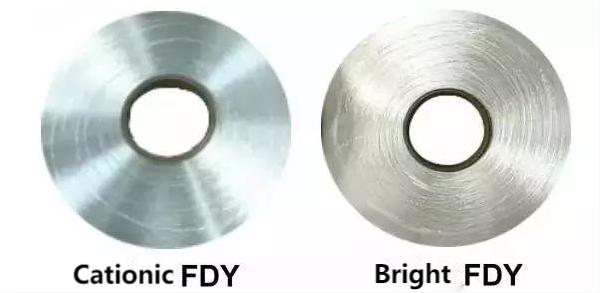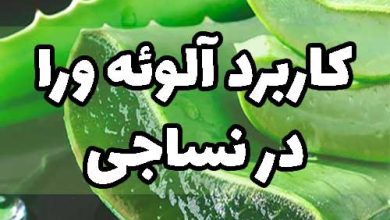الیاف پلیاستر قابل رنگرزی با رنگزای کاتیونیک که به اختصار آن را CDP ( Cationic dyeable polyester) مینامند که یک انقلابی در تولید الیاف پلیاستر بود. بر خلاف پلیاسترهای معمولی که هیچ تمایلی برای پیوند یونی با رنگزای کاتیونی ندارند ، CDP بدلیل داشتن ترکیبات منحصر به فرد این امکان را دارا میباشند.
گاها پلیاستر را با نام اختصاری ( PBT ( poly butylene terephthalate پلی بوتیلن ترفتالات میشناسند و پلیاستری که کاتیونیک شده است از نوع PBT است.
این پلیاستر کاتیونی ، همان پلیاتیلن ترفتالات سابق است که گروههای سولفونات سدیم بر روی زنجیرهای پلیمری اضافه شدهاند و توانستهاند تحول بزرگی در رنگرزی به وجود آوردند. در دمای 120 درجه میتوان رنگرزی را انجام داد و رنگهای روشنی بدست آورد اما برای بدست آوردن فامهای تیره با چالشهای زیادی روبه رو خواهیم بود.

پلیاسترهای متعارف فقط در دمای 130 درجه سانتی گراد امکان رنگرزی با رنگ دیسپرس را داشتند اما PBT (CDP) ها امکان رنگرزی در دمای 110 درجه با رنگزای کاتیونیک را دارا میباشند.
چرا پلیاستر کاتیونی پر کاربرد است؟
اصولا پلیاسترها الیاف هیدروفوب هستند و هیچ گروه قطبی ندارند بخاطر همین آنها را نمیتوانستیم با رنگرزاهای مستقیم، رنگ اسیدی و رنگ بازیک رنگرزی کنیم، فقط یک گروه استری داشت که میتوانست پیوند هیدروژنی با رنگ دیسپرس برقرار کند بخاطر همین تولید CDP یک انقلاب بزرگ به پا کرد.
پلیاستر ساختار مولکولی فشردهای دارد و کریستالیتهی بالایی هم دارد و مکانهای خیلی کمی آمورف هستند بخاطر همین رنگزا هم به این سادگیها به داخل آن نفوذ نمیکند بخاطر همین موضوع نیاز است که دما و فشار محیط رنگرزی افزایش یابد و کریر هم استفاده شود.
Polyester fiber belongs to the hydrophobic synthetic type. It lacks functional groups that can be combined with direct dyes, acid dyes, and basic dyes. Although the ester group can form hydrogen bonds with disperse dyes, the polyester molecular chain structure is tight, and the dye molecules are not easy to enter the inside of the fiber. As a result, it is difficult for regular polyester fibers to be dyed, and their color and luster are very monotonous.
Due to high crystallinity, there is only a small gap beside the polyester fiber. When the temperature is low, the molecular thermal movement changes its position to a small extent. Under wet conditions, the polyester fiber will not increase the gap by violent swelling like cotton fiber, so it is difficult for dye molecules to penetrate into the fiber. Dyeing of polyester fibers is usually done only with disperse dyes and must be under high temperature and pressure or with the help of a carrier.
From the above, we can see regular polyester (polyethylene terephthalate) has the disadvantage of low moisture absorption, poor dyeing performance, easily accumulating static, and easily fuzzing. Cationic polyester is designed to overcome these defects.
How to produce CDP?
Nowadays the commonly used method is adding dimethyl isophthalate with polarity-based SO3Na into the polyester chips. The filament spinning from this way looks similar to the common one. However, thanks to the use of ion modification, this method not only greatly improves the fiber color absorption performance, but also reduces the crystallinity. As a result, the dye molecules are easy to penetrate into the fiber. Then the dyeing property, color absorption, and hygroscopicity are remarkably improved.


- جالب است بدانیم CDP را نمیتوان با رنگ دیسپرس رنگرزی کرد.
- CDP امکان بازیافت ندارد پس نمیتوان با آن دوباره نخهای بازیافتی تولید کرد.
- CDP در تکسچرایزینگ کمی اذیت میکند و پف آن کمتر است.
- جالب است بدانید CDP با رنگ راکتیو لکه گذاری میشود.
منبع: https://textilelearner.net/perception-into-cationic-dyeable-polyester/
یه مرجع عالی برای پلی استر




